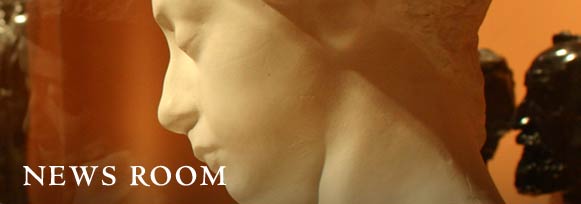Magnificent Prints from 16th-Century France on View at Cantor
A Royal Renaissance: School of Fontainebleau Prints
from the Kirk Edward Long Collection
March 27–July 14, 2013
Stanford, California —The grandeur of French 16th-century art goes on display at the Cantor Arts Center, Stanford University on March 27 in “A Royal Renaissance: School of Fontainebleau Prints from the Kirk Edward Long Collection.” The exhibition of more than 30 works continues through Bastille Day on July 14, 2013 and will be joined by other shows for a “French Summer” at the Cantor Art Center.
King François I of France returned to his realm in 1526, determined to triumph in matters of culture after suffering military defeat and imprisonment at the hands of the Holy Roman Emperor Charles V. To achieve this cultural triumph, François I invited Rosso Fiorentino, Francesco Primaticcio and other esteemed Italian artists to his court. Their primary task—and the keystone to his cultural initiative—involved transforming his medieval hunting lodge at Fontainebleau into a showcase royal residence. Refining the mannerist idiom they brought from Italy, these artists evolved the ”School of Fontainebleau” style in which elegance, eroticism, classical erudition and the grotesque are fused in a richly ornamental amalgam.
As part of the king’s cultural policy, Antonio Fantuzzi, René Boyvin, Domenico del Barbiere, Léon Davent and others made engravings and etchings that recorded the multimedia ensembles embellishing the palace and related designs. Disseminated internationally, their prints publicized the cultural efflorescence François I had fostered. The works selected for this exhibition illustrate the sophistication and extravagance of this courtly style.
All the works on view come from a private collection that is a promised gift to the Cantor Arts Center. Bernard Barryte, curator of European Art at the Cantor, has been working with collector Kirk Edward Long for more than eight years to develop his pan-European collection of mannerist prints. “A Royal Renaissance” was developed by Sarah Grandin (2011, Comparative Literature and Art History) during her senior year at Stanford under Barryte’s supervision. The exhibition is made possible by the Lynn Krywick Gibbons Exhibitions Fund.
The Cantor is open Wednesday–Sunday, 11 am–5 pm, Thursday until 8 pm and is located on the Stanford campus, off Palm Drive at Museum Way. Parking is free on weekends and after 4 pm weekdays. Information: 650-723-4177, museum.stanford.edu
# # #
Notes to editors:
• To arrange interviews and for further information, contact Anna Koster, Head of Communications, Cantor Arts Center, 650-725-4657, akoster@stanford.edu
• For high-resolution publicity images, contact PR Assistant Manager Margaret Whitehorn, Cantor Arts Center, 650-724-3600, mmwhite@stanford.edu
Cantor’s Special Exhibitions of French Art This Season
• “A Royal Renaissance: School of Fontainebleau Prints from the Kirk Edward Long Collection,” March 27–July 14; the 16th-century grandeur of this royal palace illustrated through 37 engravings and etchings
• “Manet and the Graphic Arts in France, 1860–1880,” June 12–November 17; prints, drawings, and photographs from the decades before and after the Paris Commune of 1871
• “Inspired by Temptation: Odilon Redon and Saint Anthony,” July 3–October 20; a rare look at this artist’s response to Flaubert's 1874 poem The Temptation of Saint Anthony
• “Storied Past: Four Centuries of French Drawings from the Blanton Museum of Art,” July 3–September 22; 55 old master drawings in their only West Coast viewing
• “Drawn to the Body: French Figure Drawings from the Cantor Arts Center Collection,” July 3–September 22; a selection of old master drawings to complement "Storied Past"
• “Matisse Jazz,” July 31–September 22; colorful and lively subject matter with poetic text, 20 prints from Stanford Library’s Special Collections
Learn more about other French shows

Léon Davent (France, active 1536–d.1550), Alexander Mastering Bucephalus, c. 1546. Etching. Cantor Arts Center, Lent by Kirk Edward Long.



